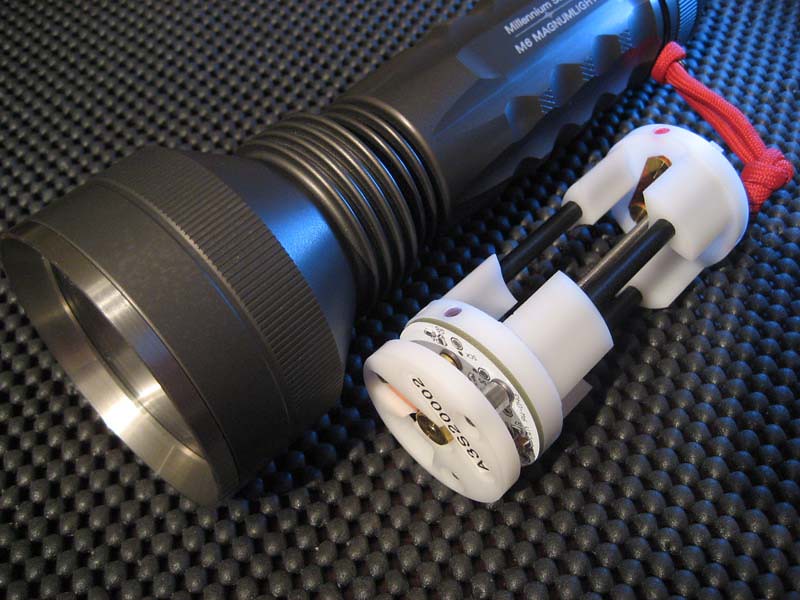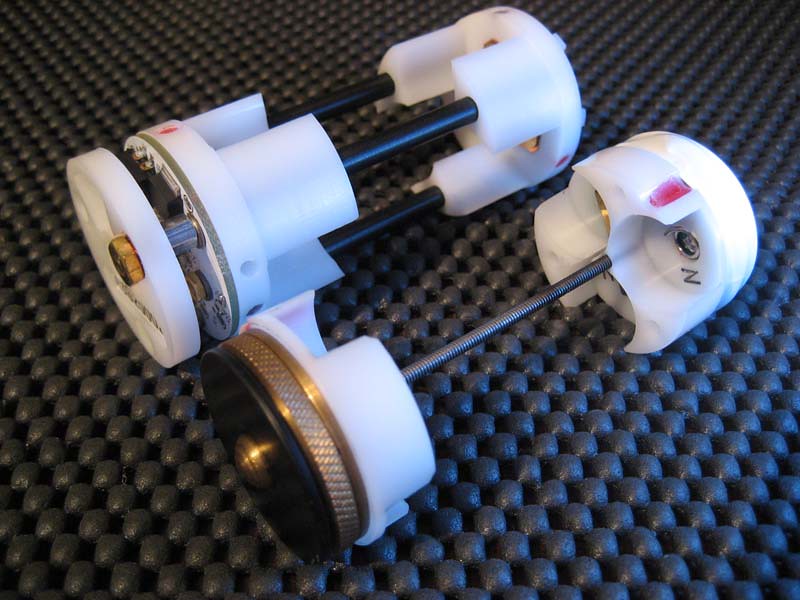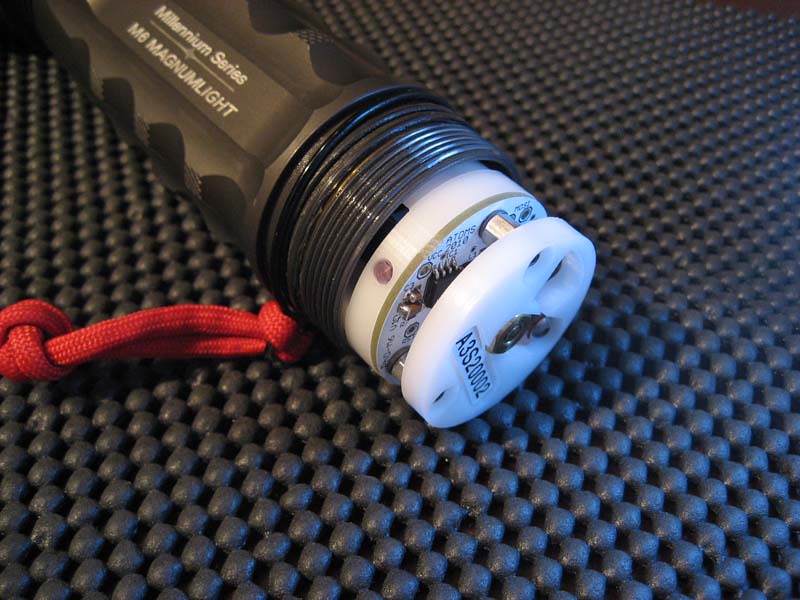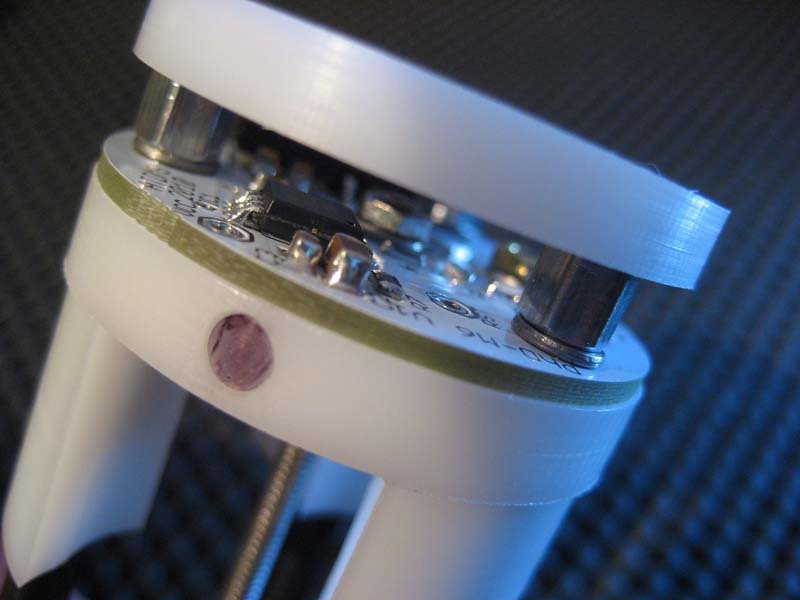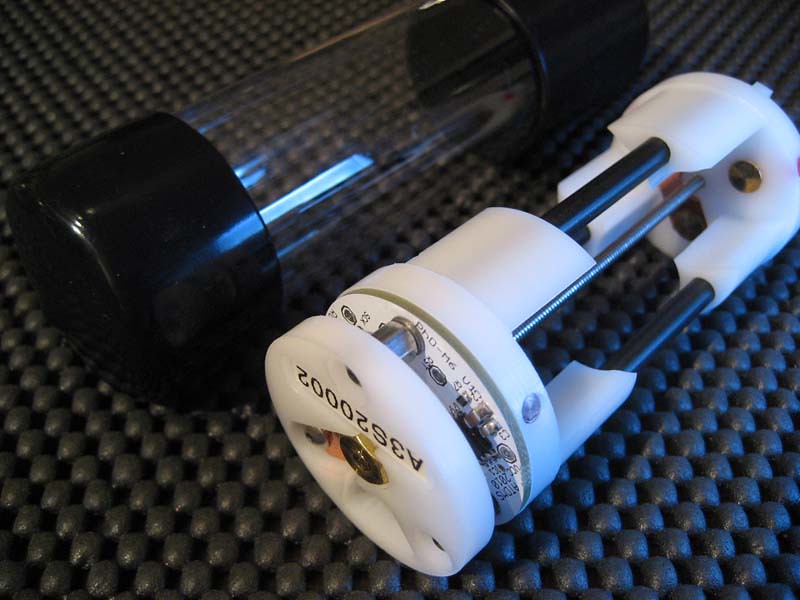Re: Feeler: PhD-M6 (programmable hotwire driver for the SF-M6)
I wanted to give an initial impressions report since I got the PhD-M6 from Will today.
First, let me thank Eric for his last post about the heat issue with cells, and his sensible recommendation when using higher power bulbs to limit runs to around 5 mins, or when it feels like significant heat is building up externally. The battery resellers/manufacturers who list performance specifications use the most favorable (yet unrealistic) testing conditions. For example, their measurements of cell capacity and voltage under load tests are done with the cells as hot as possible (like NiMH 'hot off the charger') knowing it will give the best results.
Secondly, now that I have one of these PhD-M6's in my hands, it is obvious how well designed they are. I had a couple of logistical/part orientation issues that can easily be fixed, and discussed them several hours ago with Will.
I have never used any of Eric's battery holders, and being accustomed to Fivemega's holders, the first thing I did was unscrew the top to load the batteries. That resulted in the unglued black support rods falling out of the Delrin end pieces, two of which rolled under my computer case. I missed the point that these were designed to not be completely unscrewed, rather the batteries only need to be pushed in from the side.
However, this gave me a chance to admire the contact points, and see how secure the center threaded rod was with regards to not being able to tighten down into the tail/driver board end which has been a problem with other brands. There is also zero rotational "twisting" as you tighten the cap--very nice. Once satisfied this was a secure and safe thread anchoring system, it took quite a while to line up the 3 batteries and black support rods to get the top back on. Then I was not sure which side of the top anchoring wheel/nut faced up. I thought I better give a quick call to Will about this and the bulb voltage question, and of course, I guessed wrong--the knob/nut faces down towards the pack for better electrical contact.
 First lesson
First lesson: Don't remove the top, just insert the cells from the side, and tighten top to hold them secure. If you do remove it, just put it back together without the cells, and insert them later. Securing "ratchet top" (another nice enhancement) goes with protruding nut/knob side down. I felt stupid.

Next suggestion I gave Will was to add the list of lamps to the printout, either next to the custom written level voltages, or with the photos. Most people are going to use the same default set of 4 voltage levels & moon-mode setting, so I think it could all be printed out and be a part of the instructions. Obviously for a custom voltage setup, another form with manually filled in blank numbers like the one sent to me could be separately used. I like the idea of keeping the circuit end of the pack towards the tailcap, and away from the bulb heat, but indeed, it works if inserted either end first.
Final confusion I had was selecting the proper voltage level with the default MN21 I had been using in my M6, so I came back to this thread, and after some searching, found that Eric recommended using the
Level 2 (6.8V) setting for this bulb. I thought about that for a couple minutes, and spent about a half hour failing to find the threads where the various MN bulbs had their optimal voltages under load with standard SF holder & primary cells listed.
Despite all the work I have done with bi-pin bulb testing, I never learned about the voltage/performance under load of the SF MN bulbs, only having the M4 & M6, so I was puzzled why Eric's recommended voltage was so low, when I knew that putting 3s2p of SF A123 cells each with fresh voltage of 3.25V added up to 9.75V and drove the bulb just fine.
Of course, Will informed me that SF designed the combination of the MN20 & MN21 bulbs (and their primary cells) to withstand a normally higher initial inrush current without needing a soft start. The primary cells voltage/current sags almost immediately under the bulb's load to work just fine. Will was completely gracious, but again I felt stupid and had to laugh at myself being such a MN noob.

Once I was reassured that Eric's 6.8V (Level 2) was correct, flipping those switches with your fingernail to match the photos was child's play, and an elegant improvement over trying to jam a pen into the earlier 'recessed' switches.
From that point on, it was all a heavenly experience. Through two sets of 17670 AW protected cells, it always worked with that continuously regulated, beautiful white color!

The 1/10th to 2/10's of a second soft start is not even noticeable. Push button flashing works just fine. If you do it as fast as you can, the pulses are dim, but at a rate of 1 per second, they were bright white flashes.
I ran it several times for 7 & 8 minutes, and this bulb/battery combination got warm at the head and neck, but not at all hot, unless I neglected adequate cooling time in between. I didn't get precise on the overall run time of the cells, but I think Eric has that nailed down in other posts. I would estimate it to be 22-25 mins, with another 5 mins of moon-mode which was obvious and still useful illumination. Once I let it continue draining until shutdown, it did not turn back on (as is the design). Removing the three warm-hot cells after about 5 mins showed their voltages of 3.1, 3.3, & 3.4V, so they were well drained but not abused. These AW cells are 18-24 months old. Back into the Pila chargers they went.
I immediately began thinking of how many boxes of cells I had gone through since I bought this light, and how that--and the quickly fading output--were the biggest reasons I didn't use it more often. I figured I went through at least 90 cells at $1.75 to $2 each including shipping! Now I had something that has a soft start, gives regulated light, lets me easily replace the cells when they wear out, and allows easy custom settings for different bulb applications I want, and as far as I can tell is nearly idiot proof. It is what the average consumer would dream of having for this incan M6 model. I smiled, and am thrilled to have ordered two.
This is a no-brainer, folks. Big hat's off to Will, Eric, AlanB, JimmyM, Willie Hunt (who I'm sure will be proud when he sees this), and other contributors. As far as I am concerned, it is ready for release with some simple instructional enhancements & putting all the information on the shipped instructional pages.



